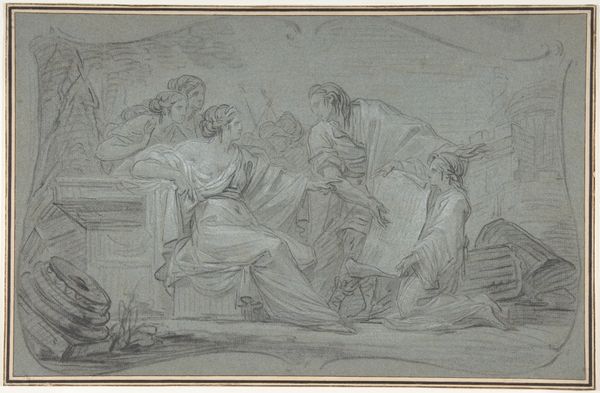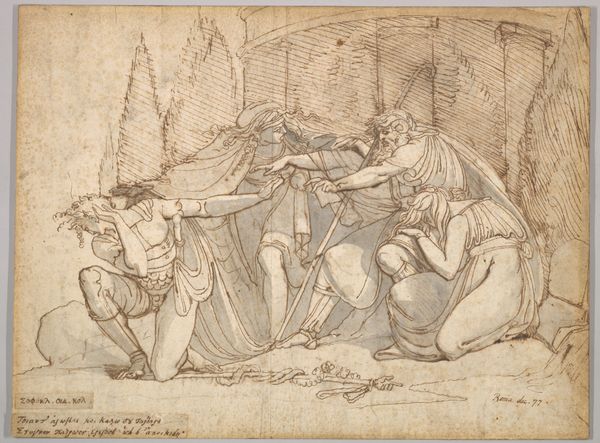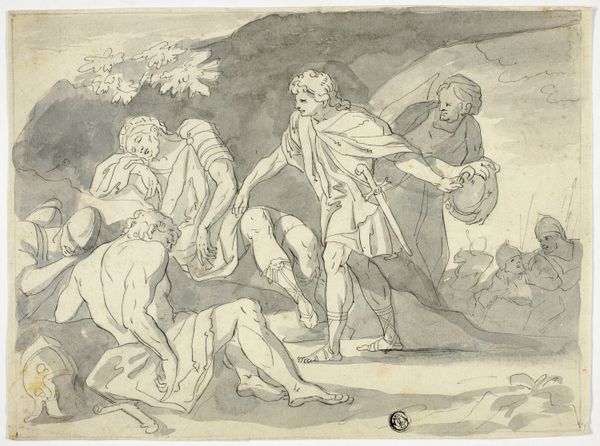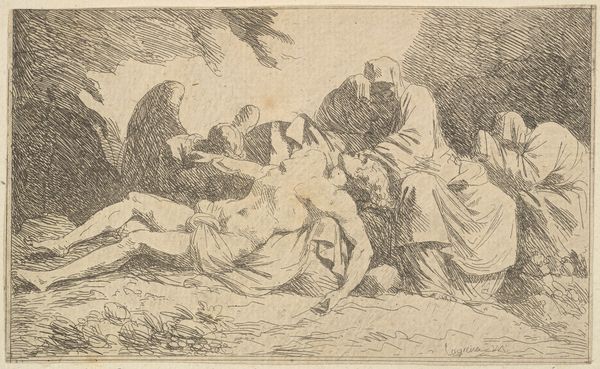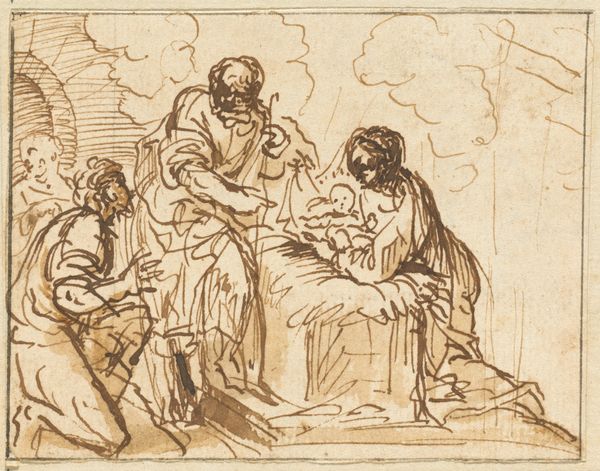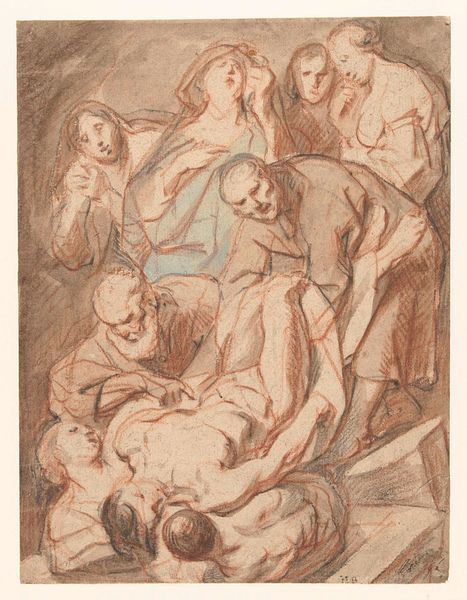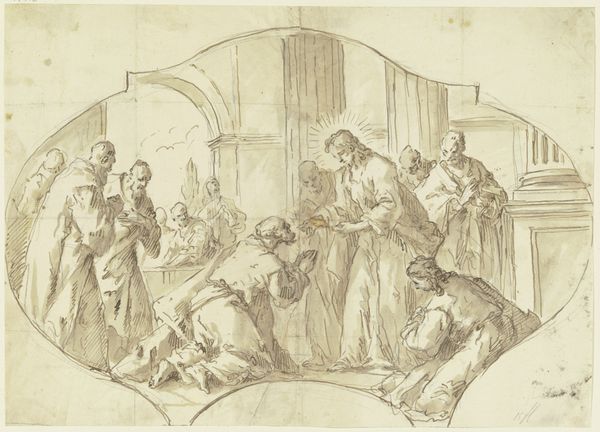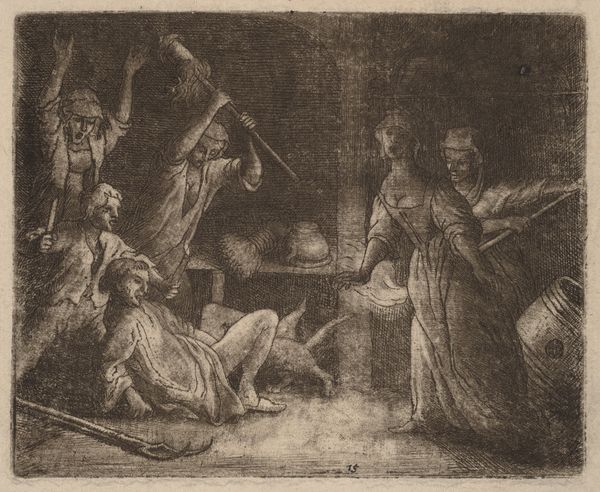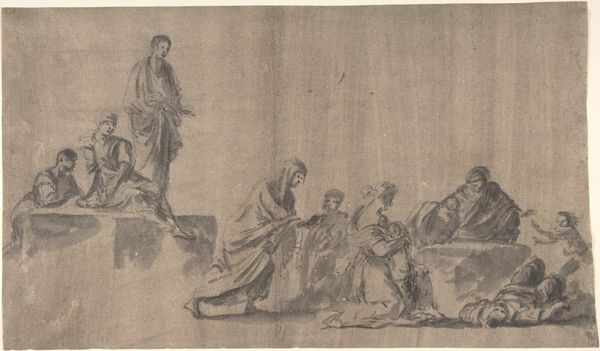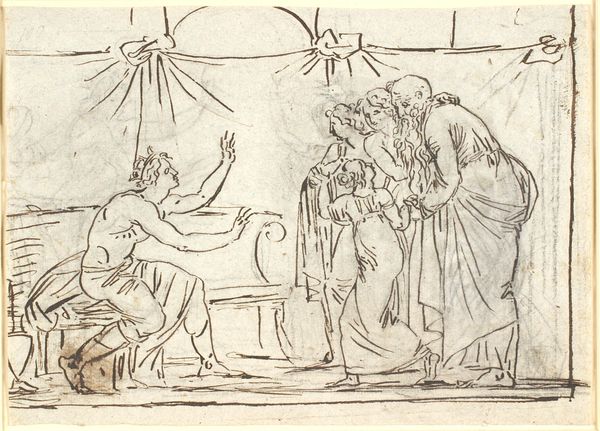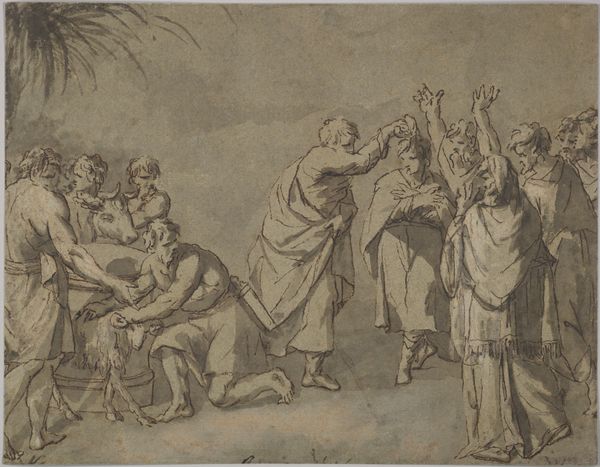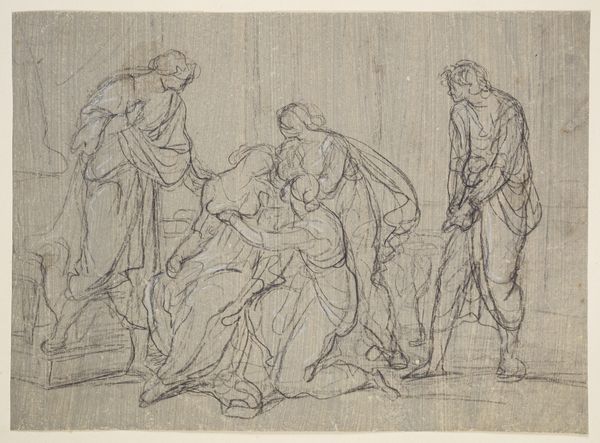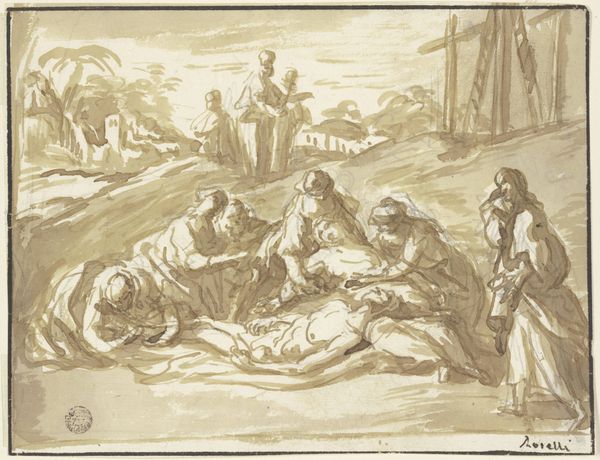
Die drei Parzen mit einer betrübten weiblichen Gestalt
0:00
0:00
drawing, paper, ink, indian-ink
#
drawing
#
baroque
#
figuration
#
paper
#
ink
#
pencil drawing
#
indian-ink
#
history-painting
Copyright: Public Domain
Editor: This drawing, "Die drei Parzen mit einer betrübten weiblichen Gestalt," seems to come to us from Giovanni Francesco Romanelli, though the exact date is unknown. It's done in ink on paper and currently resides at the Städel Museum. The swirling lines and dramatic poses evoke a sense of profound sorrow. What story do you see unfolding here? Curator: This baroque drawing depicts the three Fates, or Parcae, attending to a grieving woman, likely a mortal experiencing great loss. Think about the socio-political context of the time. How did Baroque art, often commissioned by wealthy patrons or the Church, use classical narratives to convey specific messages about power, mortality, and divine order? Editor: That makes sense. So, the Fates aren’t just a mythological reference; they are also symbolic? Curator: Precisely! They're visual shorthand for predetermined destiny. Romanelli would have been using familiar imagery to resonate with an educated audience steeped in classical learning. How does this understanding shape your reading of the drawing now? Does it impact your view on how such scenes were displayed in homes or in more public settings at that time? Editor: It’s a different feel now knowing how they wanted their world interpreted through their art. It almost becomes propaganda if the patron had an agenda they wanted broadcast through the arts. Curator: A lot of the themes chosen by the artists at that time directly mirror the political, social, or religious standings the patrons wanted everyone to have at the time. Are there any further implications you find when you look back at Romanelli’s “Die drei Parzen mit einer betrübten weiblichen Gestalt?" Editor: Understanding the artwork as tied to the powers of that time is really informative. I had not previously examined it as historical interpretation but as the artists' idea alone. Thank you! Curator: Indeed. Considering the public role of art shifts our focus from individual expression to broader social dialogues. And remember to keep those contexts in mind when viewing other art as well!
Comments
No comments
Be the first to comment and join the conversation on the ultimate creative platform.
